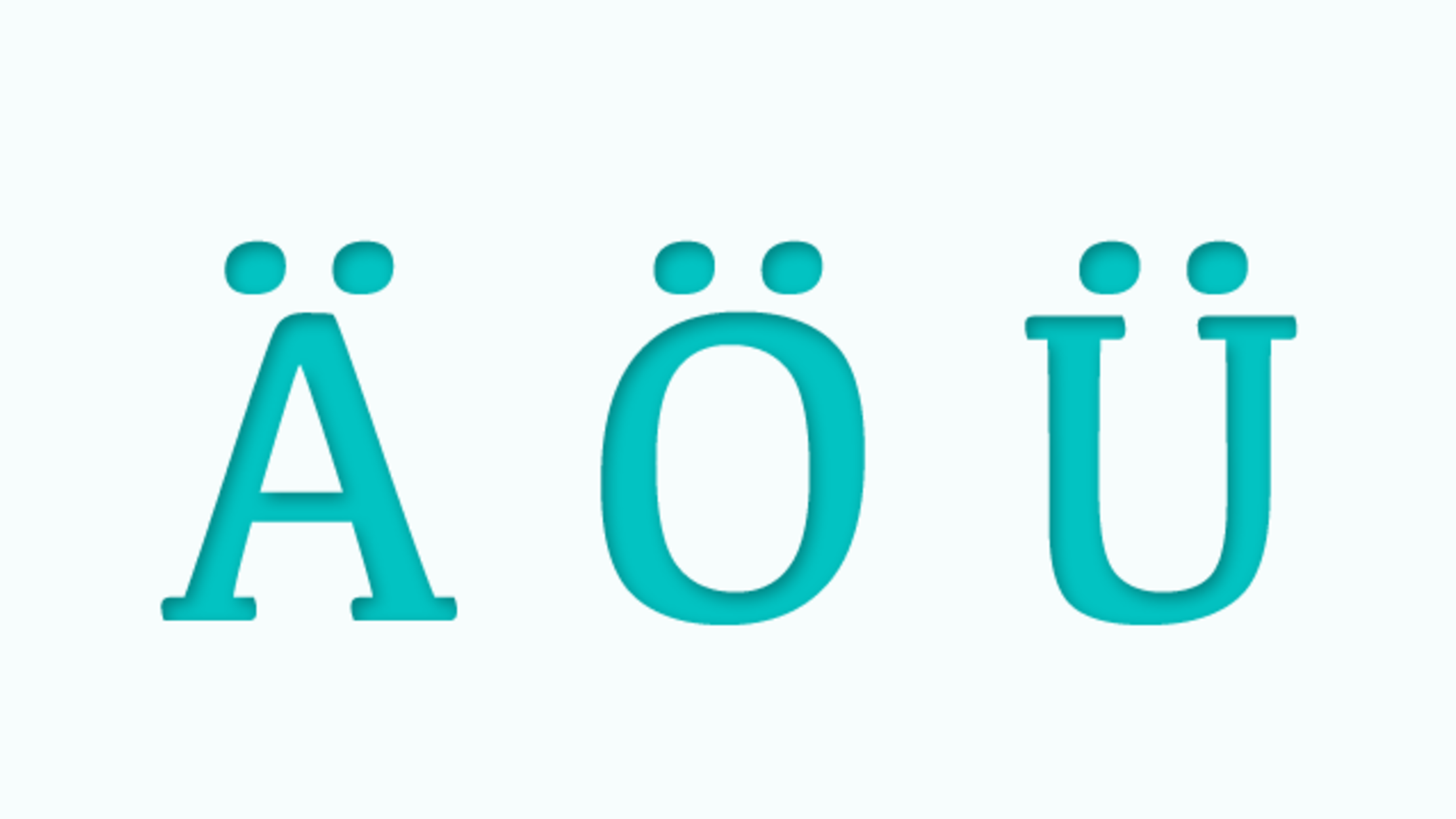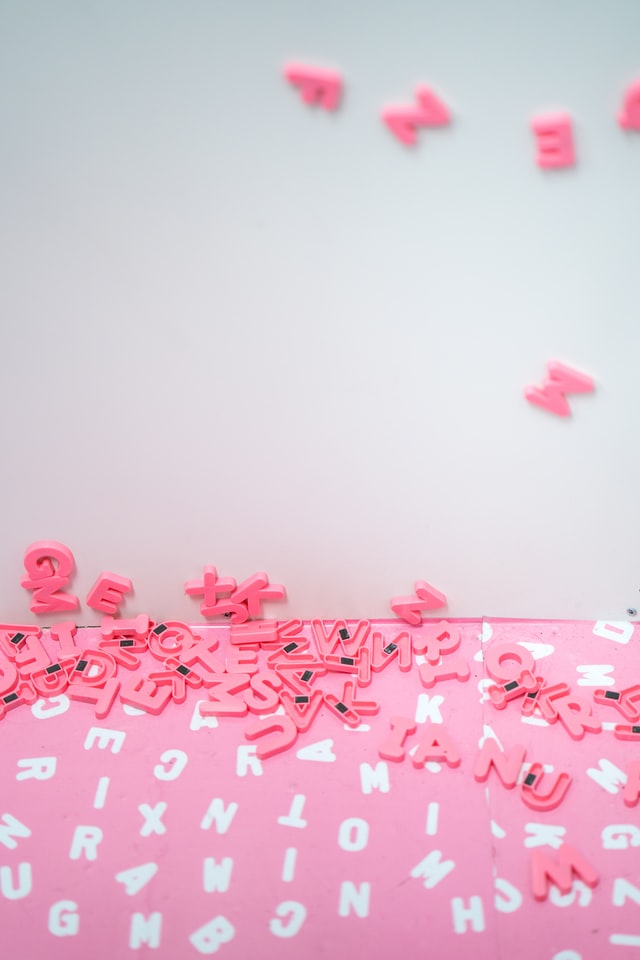

- #German letter a with umlaut software
- #German letter a with umlaut iso
- #German letter a with umlaut mac
- #German letter a with umlaut windows
#German letter a with umlaut mac
In Mac OS, one can hold option (alt) while pressing u to obtain the dots and then u again (or any other desired vowel that shall receive the dots) to place it under the dots.
#German letter a with umlaut windows
On US International layout Windows users can access the acute accent letter 'Ü' by holding down the "AltGR" key whilst typing the 'Y' key on the keyboard. On Swiss French layout the 'Ü' can be entered by typing 'É' while holding down the shift key. Some local keyboard layouts, especially German and Swiss German layouts, feature a separate key for the letter 'Ü'. In Microsoft Windows, one can hold alt while pressing 0220 or 154 on the numeric keypad (when Num Lock is on) as a shortcut to Ü and hold alt while pressing 0252 or 129 as a shortcut to ü. While Unicode theoretically provides a solution, this is almost never used. As a result there was no way to differentiate between the three different characters.
#German letter a with umlaut iso
Since they looked near-identical the two glyphs were combined, which was also done in computer character encodings such as ISO 8859-1. In modern typography there was insufficient space on typewriters and later computer keyboards to allow for both a U-with-dots (also representing Ü) and a U-with-bars. In most later handwritings these bars in turn nearly became dots. U-umlaut was written as a U with a small e written above: this minute e degenerated to two vertical bars in medieval handwritings. Historically the unique letter Ü and U-diaeresis were written as a U with two dots above the letter. In the Rheinische Dokumenta, a phonetic alphabet for many West Central German, the Low Rhenish, and few related vernacular languages, "ü" represents a range from a close front rounded vowel ( IPA notation: ) to a near-close near-front rounded vowel ( IPA notation: ). After the 1990 spelling reforms, it is applied to a few more words, like aig üe (formerly aigu ë), ambig üe (formerly ambigu ë) and arg üer (formerly without accent). In French, the diaeresis appears over the "u" only very rarely in some uncommon words, capharnaüm ('shambles') Capernaüm or Emmaüs. In Spanish it is used to distinguish between "gue"/"güe" and "gui"/"güi": antigüedad (antiquity), pingüino (penguin). In Catalan it is used to distinguish between these pairs to mark that u is pronounced and not silent:"gue"/"güe" ( / ),"gui"/"güi" ( / ),"que"/"qüe" ( / ),"qui"/"qüi" ( / ), for example: aigües, pingüins, qüestió, adeqüi.Also ü is used to mark that vowel pairs that normally would form a diphthong must be pronounced as separate syllables, examples: Raül, diürn. Several languages use diaeresis over the letter U to show that the letter is pronounced in its regular way, without dropping out, building diphthongs with neighbours etc.įor example, Brazilian Portuguese combinations "gue" and "gui" are pronounced, ,but "güe" and "güi" are pronounced.
#German letter a with umlaut software
Software for optical character recognition sees it sometimes falsely as ii. In other languages that do not have the letter as part of the regular alphabet or in limited character sets such as ASCII, U-umlaut is frequently replaced with the two-letter combination "ue".

In Swedish the letter is called tyskt y which means German y. It is however not a part of these languages' alphabets.

In languages which have adopted German names or spellings, such as Swedish, the letter also occurs. The letter is collated together with U, or as UE. It represents the umlauted form of u, which results in the same sound as the letter Ü mentioned in the previous section. Johann Martin Schleyer proposed an alternate form for Ü in Volapük but it was rarely used.Ī similar glyph, U with umlaut, appears in the German alphabet. "Ü" is also used in the Uyghur Latin script, where it also represents the sound. As letter "ü" is missing on most keyboards and the sound "v" is not present in standard Mandarin, letter "v" is used on most computer Chinese input methods to enter the words containing "ü". Pinyin uses Ü only when ambiguity could arise with similarly romanized words containing a U, whereas Wade-Giles and Lessing use Ü in all situations. This same letter appears in the Chinese romanizations pinyin, Wade-Giles, and the German-based Lessing-Othmer, where it represents the same sound ( ) e.g. It is a distinct letter, collated separately, and not considered a simple modification of or. The letter Ü occurs in the Hungarian, Portuguese, Catalan, Karelian, Klingon, Turkish, Uyghur, Estonian, Azeri, Turkmen, Crimean Tatar and Tatar Latin alphabets, where it represents a close front rounded vowel ( ).


 0 kommentar(er)
0 kommentar(er)
